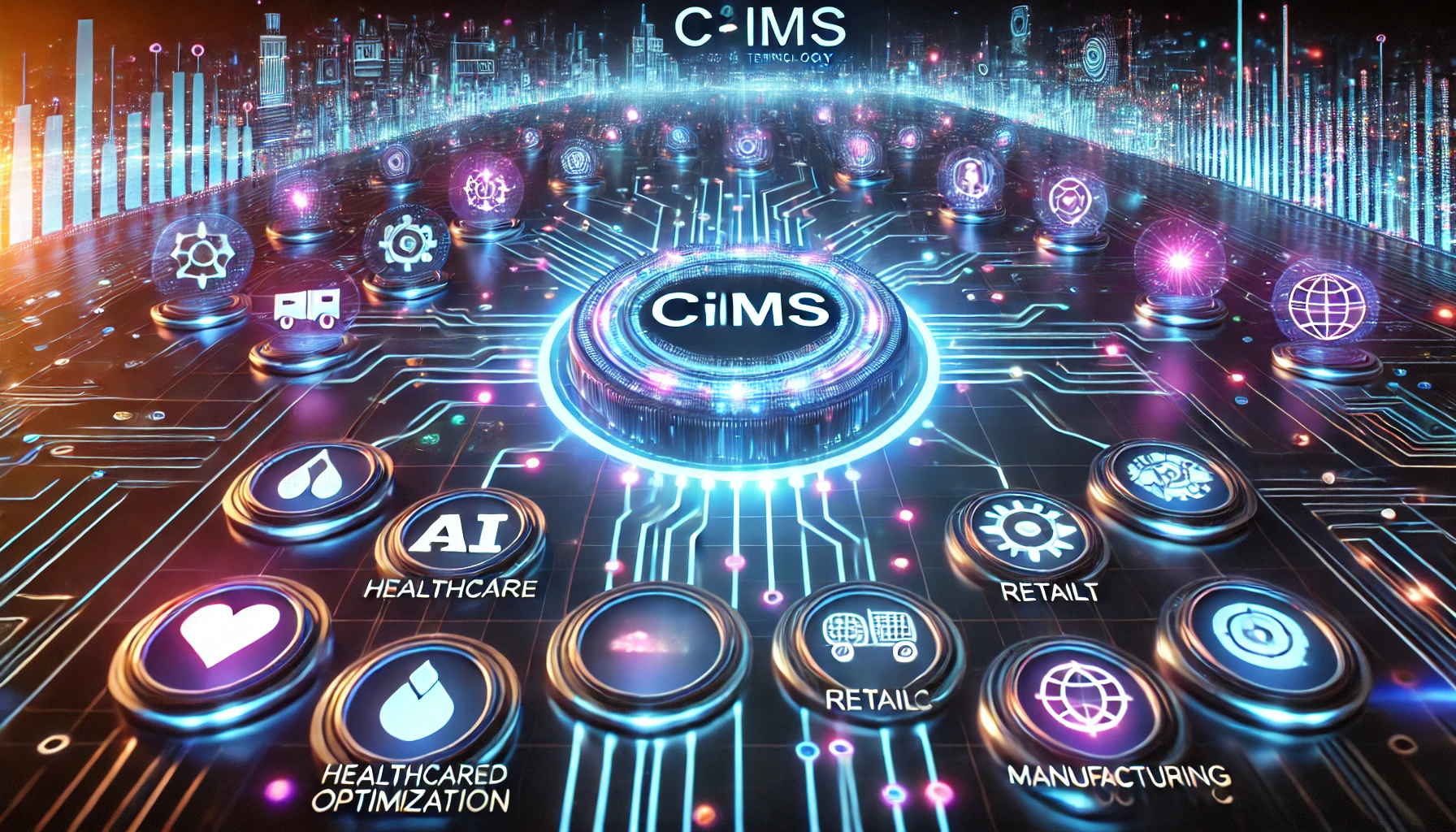Introduction
The world of technology is constantly evolving, with new systems, models, and processes emerging to address challenges across industries. One such system gaining attention is cñims. Whether you’re in the tech field or just someone curious about new technologies, understanding what cñims is, how it works, and why it matters is crucial for staying ahead in today’s fast-paced digital landscape.
In this article, we will dive deep into cñims, its key features, applications across industries, and future prospects. We’ll explore its importance, explain how it compares to other technologies, and offer a roadmap on how to get started with it.
What is cñims?
At its core, cñims is a cutting-edge system designed to optimize and streamline a variety of operations within digital infrastructure. Though the exact nature of cñims may vary depending on the industry, it is generally known for improving efficiency, reducing costs, and enhancing user experience by integrating smart processes into existing frameworks.
For example, cñims could be applied to areas such as data management, network optimization, and user behavior analytics. What sets it apart from other systems is its ability to evolve based on specific needs, adapting to both large-scale enterprises and smaller, more niche applications.
Core Features and Benefits of cñims
The success of cñims lies in its diverse features that address specific operational needs. Let’s look at the key benefits of integrating cñims into your processes:
- Adaptability: cñims can be tailored to meet the unique requirements of various industries. Its modular structure means it can grow with the needs of the business, ensuring that it provides long-term value.
- Efficiency: By automating several time-consuming tasks, cñims reduces the need for human intervention, thereby increasing operational efficiency. This also lowers the chances of human error.
- Real-Time Analytics: One of the standout features of cñims is its ability to analyze vast amounts of data in real time. Whether it’s monitoring user behavior or processing complex datasets, cñims provides actionable insights almost instantly.
- Cost Reduction: By automating tasks and streamlining processes, cñims helps organizations reduce operational costs. This is particularly beneficial for industries that rely heavily on data processing or network optimization.
- Improved Decision-Making: The data insights generated by cñims can aid decision-makers in making informed choices, improving outcomes, and staying ahead of the competition.
Applications of cñims Across Industries
cñims is not limited to one field but can be applied across various sectors, enhancing processes in ways that were previously unimaginable. Below are some key industries benefiting from cñims:
1. Healthcare
In the healthcare sector, cñims is used to optimize patient data management and improve diagnosis accuracy. Its ability to process medical records quickly and identify patterns in patient behavior can lead to faster diagnoses and better outcomes. Moreover, it can help in the management of healthcare networks, reducing operational overheads and improving patient satisfaction.
2. Finance
The finance industry is known for its massive volume of data and the need for precision. cñims helps financial institutions optimize everything from fraud detection to customer service. With real-time analytics, banks and financial services can offer more personalized experiences to clients, improving trust and satisfaction.
3. Retail
For retailers, cñims plays a crucial role in inventory management, customer experience, and supply chain optimization. By analyzing buying patterns and forecasting demand, retailers can ensure they have the right products at the right time, minimizing waste and maximizing profits.
4. Manufacturing
In manufacturing, cñims helps streamline production lines, reducing downtime and improving efficiency. With real-time monitoring of production systems, manufacturers can predict potential failures and address them before they lead to costly interruptions.
5. Telecommunications
Telecommunications companies rely on cñims for optimizing network performance and user experience. By analyzing network traffic, cñims helps identify bottlenecks, predict future needs, and ensure the best possible service for users.
How cñims Compares to Other Technologies
When compared to similar technologies, cñims stands out in several ways. While traditional systems rely heavily on manual input and are often limited in scalability, cñims leverages AI-driven processes and machine learning to automatically adapt and improve performance over time.
For example, in data processing, systems like CRM software or traditional ERP (Enterprise Resource Planning) tools may struggle with large data sets and require constant human intervention. cñims, however, can manage these datasets autonomously and provide deeper insights with minimal manual oversight. This makes cñims a more scalable and cost-effective solution in comparison.
Getting Started with cñims: A Beginner’s Guide
If you’re considering integrating cñims into your business or workflow, getting started may seem daunting. However, breaking it down into simple steps can make the process manageable:
- Identify Needs: Start by identifying the areas where cñims can bring the most value to your business. Is it in automating processes, improving data analytics, or optimizing operations?
- Research Providers: There are numerous cñims solutions available, each offering unique features. Research and choose a provider that best suits your business needs.
- Start Small: Begin with a pilot program to test how cñims can be integrated into your existing infrastructure. Start with one department or process, then gradually scale up as you see results.
- Train Your Team: Ensure that your team is adequately trained to use cñims efficiently. This may involve attending workshops or engaging with vendor support.
- Monitor and Optimize: Once cñims is in place, continuously monitor its performance and optimize it for even better results. Take advantage of analytics to make data-driven improvements.
Future Trends of cñims
As cñims continues to evolve, it’s expected to play an even larger role in business and technology across the globe. Here are some emerging trends:
- Greater Integration with AI and ML: cñims is likely to become even more intertwined with artificial intelligence and machine learning, enabling systems to learn from historical data and provide predictive insights.
- Increased Use in IoT: With the rise of the Internet of Things (IoT), cñims will be crucial in managing the massive amounts of data generated by connected devices.
- Personalization: As consumer expectations continue to rise, cñims will be increasingly used to deliver highly personalized experiences across industries, from retail to healthcare.
- Sustainability: As businesses face pressure to become more eco-friendly, cñims will help optimize resources and reduce waste, especially in industries like manufacturing and logistics.
FAQs About cñims
Q1: Is cñims difficult to integrate into existing systems?
Integrating cñims depends on the complexity of your existing infrastructure. However, many providers offer scalable solutions that are designed for easy integration with minimal disruption.
Q2: Can cñims be used in small businesses?
Yes, cñims can be used in businesses of all sizes. Its modular structure allows small businesses to implement specific features without the need for large-scale systems.
Q3: How secure is cñims?
Security is a top priority for any cñims solution. Most providers offer strong encryption and data protection features to ensure that sensitive information is kept safe.
Conclusion: The Impact of cñims on the Industry
In conclusion, cñims represents a transformative technology with the potential to improve efficiency, reduce costs, and enhance decision-making across industries. From healthcare to finance and beyond, its applications are wide-ranging, and its future prospects look bright. By adopting cñims, businesses can stay ahead of the curve and unlock new levels of performance and productivity.
For those looking to explore more about how to implement cñims into their own systems or to learn about similar advanced technologies, Hix.ai offers an innovative approach to AI-driven content creation and optimization.








